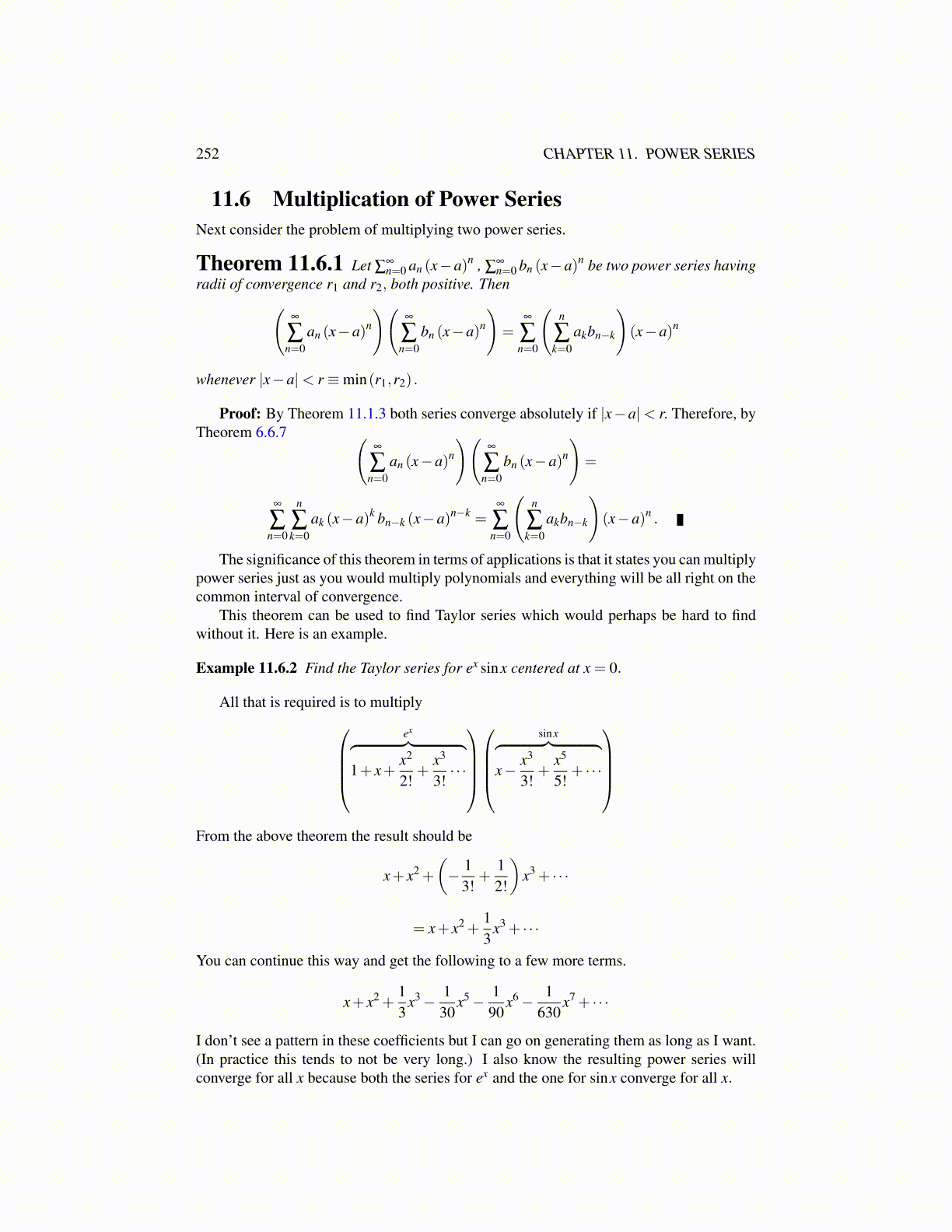
252 CHAPTER 11. POWER SERIES
11.6 Multiplication of Power SeriesNext consider the problem of multiplying two power series.
Theorem 11.6.1 Let ∑∞n=0 an (x−a)n , ∑
∞n=0 bn (x−a)n be two power series having
radii of convergence r1 and r2, both positive. Then(∞
∑n=0
an (x−a)n
)(∞
∑n=0
bn (x−a)n
)=
∞
∑n=0
(n
∑k=0
akbn−k
)(x−a)n
whenever |x−a|< r ≡ min(r1,r2) .
Proof: By Theorem 11.1.3 both series converge absolutely if |x−a|< r. Therefore, byTheorem 6.6.7 (
∞
∑n=0
an (x−a)n
)(∞
∑n=0
bn (x−a)n
)=
∞
∑n=0
n
∑k=0
ak (x−a)k bn−k (x−a)n−k =∞
∑n=0
(n
∑k=0
akbn−k
)(x−a)n .
The significance of this theorem in terms of applications is that it states you can multiplypower series just as you would multiply polynomials and everything will be all right on thecommon interval of convergence.
This theorem can be used to find Taylor series which would perhaps be hard to findwithout it. Here is an example.
Example 11.6.2 Find the Taylor series for ex sinx centered at x = 0.
All that is required is to multiplyex︷ ︸︸ ︷
1+ x+x2
2!+
x3
3!· · ·
sinx︷ ︸︸ ︷x− x3
3!+
x5
5!+ · · ·
From the above theorem the result should be
x+ x2 +
(− 1
3!+
12!
)x3 + · · ·
= x+ x2 +13
x3 + · · ·
You can continue this way and get the following to a few more terms.
x+ x2 +13
x3 − 130
x5 − 190
x6 − 1630
x7 + · · ·
I don’t see a pattern in these coefficients but I can go on generating them as long as I want.(In practice this tends to not be very long.) I also know the resulting power series willconverge for all x because both the series for ex and the one for sinx converge for all x.